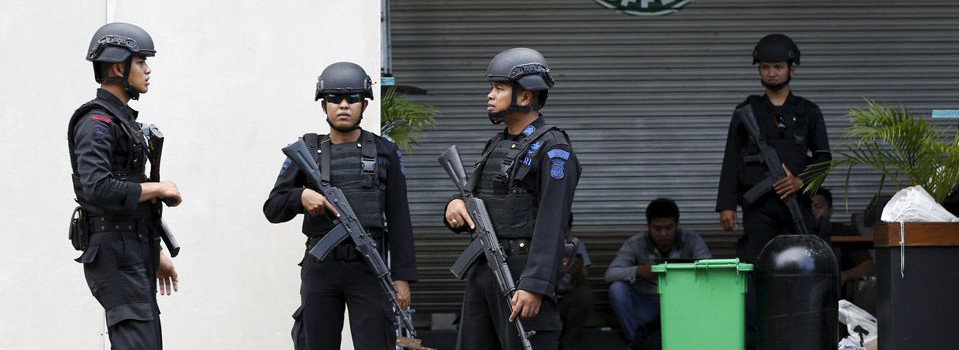ASIA-PACIFIC DEFENCE ——————–
Day Two of the conference on regional security issues: Felix Soh and Derwin Pereira report
INDONESIAN PERSPECTIVE
THE gap between the country’s rich and poor is the real threat to Indonesia’s security and not external forces.
And an effective way of countering the internal threat was to build on the country’s aerospace and tourist industries, said Indonesia’s Minister of Research and Technology, Dr B.J. Habibie, yesterday.
He was speaking to about 200 government officials and senior executives from the defence industry on the second day of the 2nd Asia Pacific Defence Conference, which examines key issues affecting the region’s security.
The three-day event is organised by the Institute for International Research and co-sponsored by Aviation Week & Space Technology Magazine. It is held at the Marina Mandarin hotel.
Dr Habibie, regarded as the father of Indonesia’s aerospace industry, spoke with much verve and passion for about 90 minutes on his pet subject and its impact on Indonesia’s economic well-being.
He said that about 15 per cent of the country’s 185 million population was below the poverty line.
While this represented a significant improvement from the 60 per cent 25 years ago, the government was continuing to take steps to bridge the gap between the two groups even further.
“That can eliminate systematically the threat,” he pointed out.
He said that the government’s “shrewd implementation” of economic development policies had improved the quality of people’s lives by achieving a fair distribution of opportunity and income.
In carrying out the industrial transformation, the development of the communications and transportation sector was important. In particular, the aerospace industry – as a leading sector in the economy – would play a significant role, he said.
Said Dr Habibie: “It will increase the stability of my country and will eliminate the internal threat.”
He said that Indonesia is the world’s only maritime continent with around 17,000 islands spanning an area of 5,120 km. An efficient transportation system in the form of air travel could integrate the country.
It would also develop the tourist industry, one of the country’s main foreign currency earner.
He said one of the fastest ways to bring tourists in and out of the islands was by air transport. By developing the tourist industry, the aerospace industry would bring down the poverty line.
The Indonesian government decided to boost the development of the aircraft industry as a part of its national development programme in 1974.
It set up Industri Pesawat Terbang Indonesia (IPTN), which focuses on aircraft-making. The industry assembles and produces helicopters and medium-sized airplanes under licence or in joint ventures.
Dr Habibie said that IPTN, which has a staff of about 16,000, was now producing a bigger commuter aircraft with state-of-the-art technology, the 70-seater N-250.
The N-250, which is designed and built completely by Indonesian engineers, has already secured 167 orders even though the aircraft is not due to roll off the line till 1996.
Dr Habibie noted proudly that the N-250 is the world’s first turboprop regional airliner that will use a fly-by-wire flight control system. That is, it is electronically rather than mechanically controlled.
IPTN, which already manufactures short-range aircraft such as the C-212 and CN-235 – Indonesian versions of aircraft designed by Spain’s Casa aircraft industry – has moved to develop the N-250 because it feels there is a niche in the medium-range market which it can fill.
Dr Habibie said he hoped to have the prototype roll out of the hangar this year and will schedule test flights next year before moving into production.
There was a need to implement advanced aircraft guidance technology to support air traffic management within Indonesia and further the growth of the tourist industry.
Hence, he pointed out, it was planned to establish an integrated aeronautical navigation satellite system.
It was also IPTN’s policy to develop relations with several major British and US aerospace companies.
The company signed an agreement with Airbus Industrie this week to co-operate with the flight test programme of the N-250.
The European airframing consortium will appoint a special adviser to help the Indonesian engineers with all aspects of the test and certification process.
IPTN is already laying plans to establish a US assembly plant to feed the substantial North American demand that it expects.
It has also signed a memorandum of understanding with British Aerospace to study the possibility of making and selling commuter airplanes.
Why build planes and not motorcycles? Dr Habibie said he had been asked this question before.
His answer: The domestic market for the aerospace industry was big compared to the motorcycle market which was limited.
In any case, he commented, he would then have to compete with the Japanese and others.
Dr Habibie said that despite being developed at just less than US$900 million (S$1.4 billion) in 18 years, the industry had given Indonesian society a hope and future.
He said: “It is a form of indirect defence spending where the majority of people will have direct access to enjoy the accumulated wealth.”

